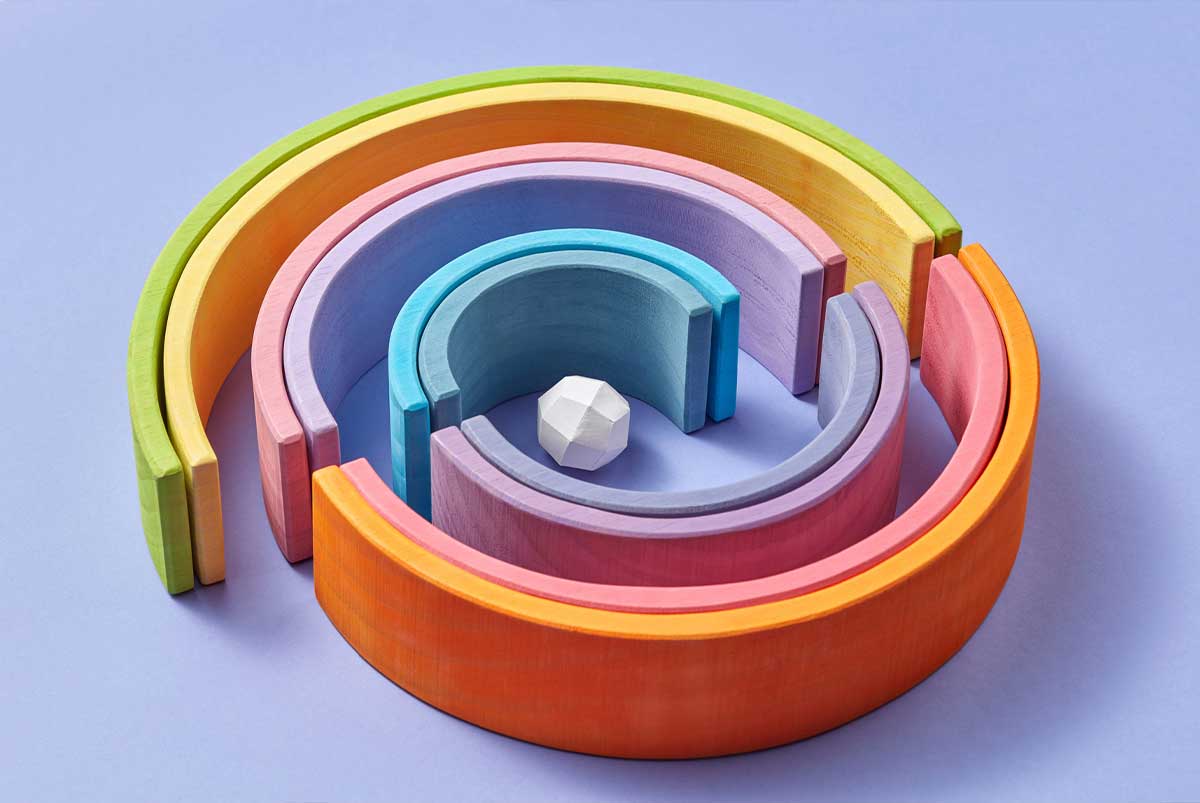Ready To Buy a Home?
Get Approved to Buy a Home
Rocket Mortgage® lets you get to house hunting sooner.
Dealing with a buyer who can’t qualify for a conventional mortgage or a government-backed mortgage can be frustrating for any seller. Fortunately, there are options in these situations. And one of those options is a wrap-around mortgage.
A wrap-around mortgage allows a buyer to purchase a home with a seller-financed mortgage that wraps around the seller’s existing mortgage.
Wrap-around mortgages are not your everyday loan. But we can help you wrap your mind around this creative financing option. Who knows? It may be the key to unlocking your home buying (or selling) ambitions.
How a Wrap-Around Mortgage Works
A wrap-around mortgage is a seller-financed loan that lets the seller keep their mortgage and “wrap” the buyer’s mortgage around the seller’s existing mortgage.
In a wrap-around scenario, the seller finances the sale of their home (think: the seller acts as the lender). The seller drafts a promissory note (a legal IOU) that the buyer signs, promising to make payments according to the loan’s terms. The buyer makes monthly payments on the wrap-around loan, which typically has a higher interest rate than the seller’s existing mortgage.
Most buyers will get a wrap-around mortgage because they can’t qualify for traditional mortgages. Because the seller is the lender in this case, they get to dictate the loan terms and approval requirements, such as the down payment amount and the qualifying credit score.
Are wrap-around mortgages legal?
Wrap-around mortgages are only allowed if the seller has an assumable loan. Assumable loans allow for transfers from one buyer to the next – but they are rare.
Most mortgage agreements include an alienation clause (aka a due-on-sale clause), which can either prevent or complicate wrap-around mortgages. The clause requires a seller to pay off their outstanding loan balance before they can transfer their property to a new owner.
Ignoring the alienation clause and proceeding with a wrap-around mortgage can lead to legal repercussions for the seller because they’re violating their agreement with their lender.
What Is an Example of a Wrap-Around Mortgage?
Let’s say you bought a house several years ago. To buy it, you took out a $300,000 mortgage with a 4% interest rate, and your monthly mortgage payment was $1,432. After years of making on-time payments, you have $50,000 left on your mortgage. Now you want to buy a new home, but it’s been tough finding a buyer.
After 3 months on the market and dozens of showings, you finally get an offer for $400,000 – but there’s a catch. The buyer can’t qualify for a loan and wants to know if you’d be interested in seller financing.
The offers aren’t pouring in, so you decide to sell the home to the buyer with a wrap-around mortgage. The buyer agrees to pay $400,000 for the house. They make a $10,000 down payment and get a $390,000 loan from you with a 6% interest rate.
Of course, you gladly agree to the terms. You’re finally getting your home sold and for $100,000 more than you originally paid for it. And you’re charging 2% more in interest than you pay on your existing mortgage. Each month you’ll collect $2,338 from the buyer and make a profit of $906.
What Are the Risks and Benefits of a Wrap-Around Mortgage?
While a wrap-around mortgage can benefit sellers and buyers, they should also be aware of the risks.
Benefits for sellers
Sellers can benefit from wrap-around mortgages for several reasons. First, if you’re having a hard time selling your home, offering a wrap-around mortgage to an interested buyer may finally seal the deal.
Second, you’re in the driver’s seat. You decide the loan terms, including the size of the down payment. Then there’s the opportunity to make a profit. A seller can profit from a wrap-around mortgage by offering financing at a higher interest rate than they pay on their mortgage.
Risks for sellers
Like any individual or entity that lends money, home sellers are taking a risk. They are relying on buyers to make their monthly mortgage payments – payments the seller uses to keep paying off their existing mortgage. If the buyer stops making their monthly payments, the seller would be responsible for continuing to make payments on the original mortgage loan.
If the mortgage has a due-on-sale or alienation clause (which is pretty likely) and the lender finds out about the wrap-around mortgage, they can demand full payment of the loan’s remaining balance. If the seller can’t pay, legal consequences may follow.
Benefits for buyers
Buyers benefit because they can finally qualify for financing that allows them to buy a home. Buyers who agree to wrap-around mortgages usually have trouble qualifying for conventional or government-backed loans due to income, savings or credit problems.
Risks for buyers
Buyers must rely on sellers to make on-time payments on the original mortgage. If the seller doesn’t make their monthly payments, the buyer could lose the home if the lender forecloses on the property.
Alternatives to Wrap-Around Mortgages
If you’re a buyer and having a hard time qualifying for a mortgage, there are other types of loans to consider.
Government-backed loans, like Department of Veterans Affairs (VA), Federal Housing Administration (FHA) and U.S. Department of Agriculture (USDA) loans, may offer loans for buyers who don’t qualify for conventional mortgages.
You can also ask your lender why your loan application got denied. Most lenders are willing to share what you need to do to improve. It could be anything from your credit score to your debt-to-income (DTI) ratio or income. You can use the intel you receive to improve your shot at getting approved the next time you apply for a conventional loan.
Now That We’ve Wrapped This Up, What’s Your Next Move?
A wrap-around mortgage can benefit the seller and the buyer – but everyone must play by the rules.
As a seller, you need to feel confident that your buyer will make their monthly payments. As a buyer, you should only opt for a wrap-around mortgage if you trust the seller or can convince them to let you make direct payments to their lender.
Cement your trust – and terms – with an agreement that is reviewed and drafted by a real estate agent or lawyer.
Take the first step toward buying a home.
Get approved. See what you qualify for. Start house hunting.
The Short Version
- A wrap-around mortgage is a seller-financed loan that lets the seller keep their mortgage and "wrap" the buyer's mortgage around the seller's existing mortgage
- Most buyers will get a wrap-around mortgage because they can't qualify for traditional mortgages
- A seller can profit from a wrap-around mortgage by offering financing at a higher interest rate than they pay on their existing mortgage




